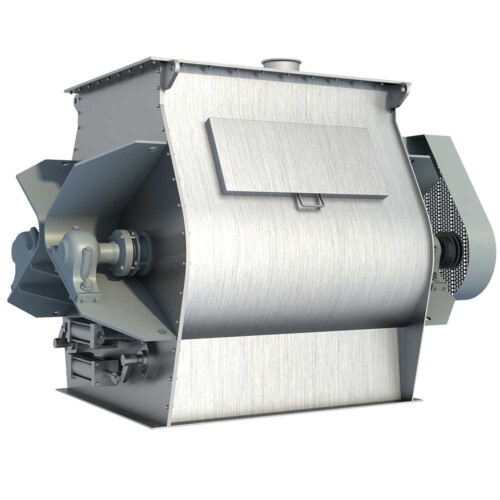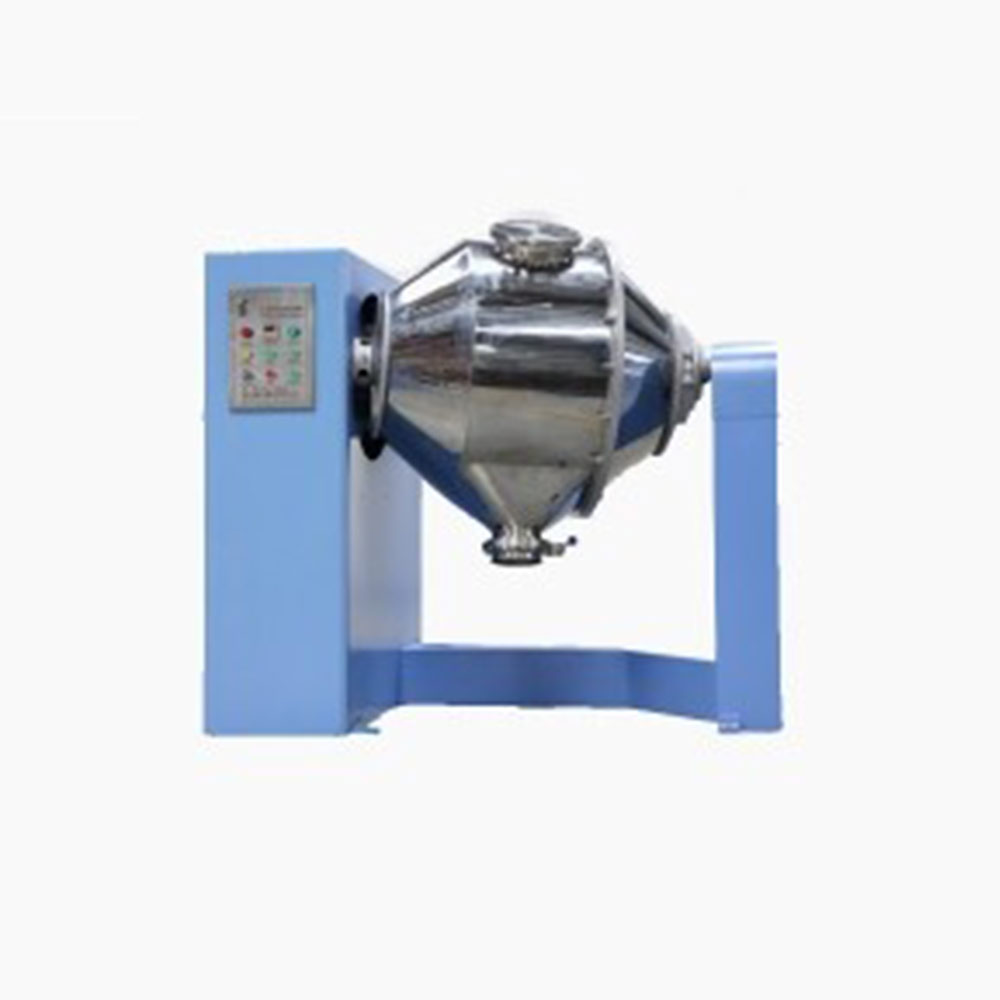Ask An Expert
Frequently Asked Questions
Yes, We can supply simple stand alone panels or automated PLC controlled systems. We normally install and test all controls on our mixers before they are shipped.
Yes, we normally test the mixers before they are shipped and mark out the wire need to connect on the control box.
We manufacture specialty mixing equipment for powder & bulk materials. Included are ribbon blender, plough mixer, conical screw mixer, twin shaft paddle mixer, V blender, double cone blender and other auxiliary equipment such as screw conveyor, quantitive auger filler.
We sell across the world, our cusotmers distribute 5 continents.
Share Us With Your Network
Choosing The Right Powder Mixer: Ribbon blender, Conical mixer or Plow mixer?
A guideline for the selection, specification, and purchase of Vortex mixing and processing equipment.
Mixing is possibly the oldest and most widely used technical process present in virtually every industry processing powders. There are very few products used in everyday life that do not have a mixing process as part of the manufacturing system. Mixing is considered one of the essential processes in manufacturing and there are many factors to consider before the purchase of a new powder mixer.
Which Mixer? Ribbon blender, plow mixer or conical mixer?

Vortex vertical ribbon mixer, also called conical mixer
First, and most important, is the material and recipe formulation to be mixed. The mechanical properties of the individual ingredients of the mix, together with their particle size, shape and flow characteristics all have a bearing on the mixer selection and will help to determine the most appropriate type of machine for the application. Also important factors to consider are the production requirement. This will affect the machine size and type; either batch or continuous. The working capacity of the powder mixer together with the desired level of automation and time and labor available for operating the machine also must be considered and will give a clear indication of the parameters of the new mixer.
It has been said that anything can be mixed in a bucket with a wooden spoon, but this simple method may be considered impractical for more than a bucket full of product. So if not a bucket and paddle, then what? There are several different types of mixing machinery on the market and it is quite possible that more than one type of machine will be capable of handling a given application. The challenge is to find the machine that is best suited to you, your process and your budget.
Although the dictionary definitions of mixers and blenders are one and the same, the tradition established among the majority of mixer manufacturers is to define a mixer as one which mixes by virtue of a moving mixing element (agitator) within a static vessel and a blender as one that mixes (or blends) by virtue of a tumbling action of the vessel itself. The different types of mixers and blenders on the market include low speed and high speed horizontal mixers with interrupted spiral, paddle, or plough type agitators, vertical mixers, as well as double cone, drum, tumble and ‘Y’ type blenders, to name but a few. In addition, some horizontal mixers and blenders may also be used as continuous mixing machines. The selection of the type of the machine best suited to your process will in part be guided by the characteristics and requirements of the material to be mixed and for instance, whether it has high or low particle strength.
So what type of machine is the best for you? Very simply it’s the one that achieves the desired product quality at a cost that falls within your budget for the purchase of the machine and it’s subsequent operational cost.

Ribbon blender agitator action, Plow mixer agitator
Before you decide….
Contact an expert -The mixer supplier will have previous experience in either your process or something similar that will help to determine the right mixer for the application.
Test the mixer – The importance of testing as part of the selection process cannot be understated. Ideally, tests should be conducted on the largest size of machine available to negate or minimize any possible effects of scale up. The effect of scale up is important for a variety of reasons. If accurate estimations of power requirement, mixing parameters, mix times, etc., are to be achieved, then the closer the test machine is in size and proportion to the actual process requirement, the more accurate will be the end result. Mixing is not an exact science. The evaluation of mix efficiency, mix times, power requirements etc., can only be established practically by actually mixing the components under consideration and by the evaluation of samples taken at specific intervals from a range of locations throughout the mass. Additional samples should be taken from the discharge stream, as these will detect any tendency of the mix to segregate on discharge. It will also detect if any of the minor ingredients have been lost due to the effects of dusting etc. Evaluation of the success of the test procedure is then a matter of assay. So now you have a clear handle on the materials that you wish to mix and results from tests carried out by your chosen mixing machinery supplier. What else do you need to consider?
The Process

Vortex Ribbon Blender picture
The new mixer will be an integral part of your manufacturing process so it is vital to consider how and where it will fit into your production facility and what it will involve in terms of design features, services and labor requirements.
Safety must be a priority – If the products that you will be handling are in any way hazardous, toxic or explosive, the new machinery will almost certainly require an ATEX rating and this must be established before committing to any new machinery. In conjunction with the mixer supplier, examine and determine the design and construction of the machine to ensure that it complies, not only with current safety legislation, but also satisfies the safe operational requirements. Part of this overall exercise will be to determine whether your product is sensitive to heat or pressure and to ensure that the design of the machine accommodates and / or mitigates these issues.
Infeed and discharge requirements – Consider how you will feed ingredients into the machine and how you will deal with the product after it has been mixed and discharged from the mixer. This may seem unrelated to the selection process for the mixer itself, but is in fact crucial to the design of the mixer and it’s peripheral features, as well as to the success or failure of the final mixer installation from a production aspect.
Material of construction – The materials of construction, i.e. stainless steel, or mild steel, and the mechanical design features of the mixer itself will, to a great extent be decided by the process. For instance, the machine may be required not only as a pure mixer, but may also need to carry out other processes such as heating, cooling or liquid addition. Depending on the nature of the product and the process, de-agglomeration of the product may be required and in order to accomplish this, a plough type mixer may be specified together with high speed choppers or intensifiers to act as an aid to mixing as well as in some cases reducing particle size. In some industries and for many applications, mixers will require only infrequent cleaning. However, several applications, particularly in hygienic or pharmaceutical environments require an effective and efficient cleaning process. This must be evaluated and considered before the design stage of the mixer. Cleaning may range from simple brushing, vacuuming or scraping for dry powder mixes, to more complex validated regimes involving wet washing and / or sanitising with the aid of fixed nozzles or wash water spray devices. Where wet cleaning is employed however, the time and method of subsequent drying must also be considered. In all cases where efficient cleaning is a requirement, the need to have access to the internal product contact surfaces of the mixer becomes paramount and this may be effected via top or side mounted hinged and safety interlocked doors or covers. Again, this is a feature that will be identified at as early a stage as possible in the mixer selection process.
Conclusion
In summary, the criteria to be considered when looking for and choosing the right mixer are:
- The products, ingredients, and processes of your desired mix
- The required production capacity
- The safety, ATEX, and any hazardous aspects of the products or process
- When previous experience of the process is not available, testing is strongly advised
- The mix quality acceptance criteria
- Co-operation with the mixer supplier to determine the mechanical design features of the mixer
- The careful consideration of ingredient infeed and mixed product discharge
- Co-operation with the mixer supplier to determine the mechanical design features of the mixer
- The careful consideration of ingredient infeed and mixed product discharge
- The ease and effectiveness of cleaning
The selection of the optimum machine for any given application will only be established following close co-operation between the end user and the equipment supplier. The well known range of Vortex mixing machinery, manufactured by Vortex, has been in existence for over 60 years. Vortex’s experienced engineers and technical specialists are on hand to assist with the selection, and specification of your new mixer.
Ask An Expert


















